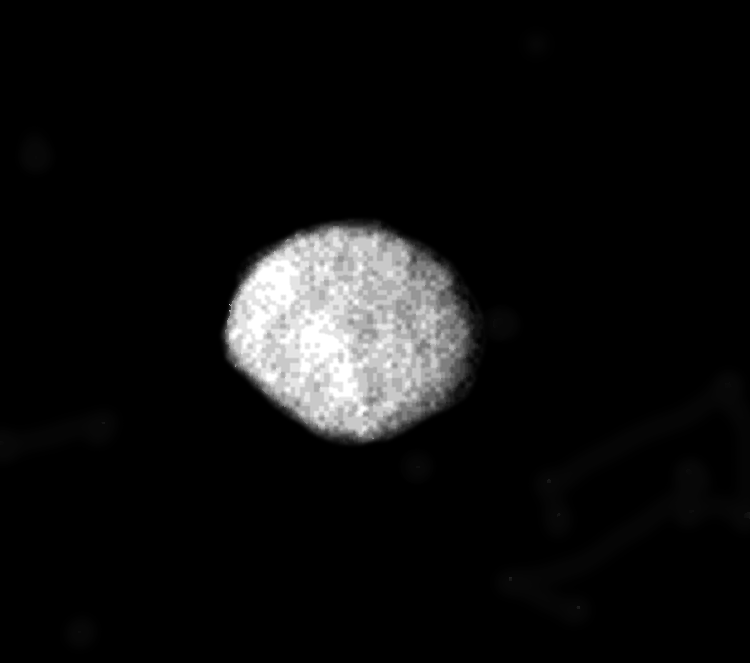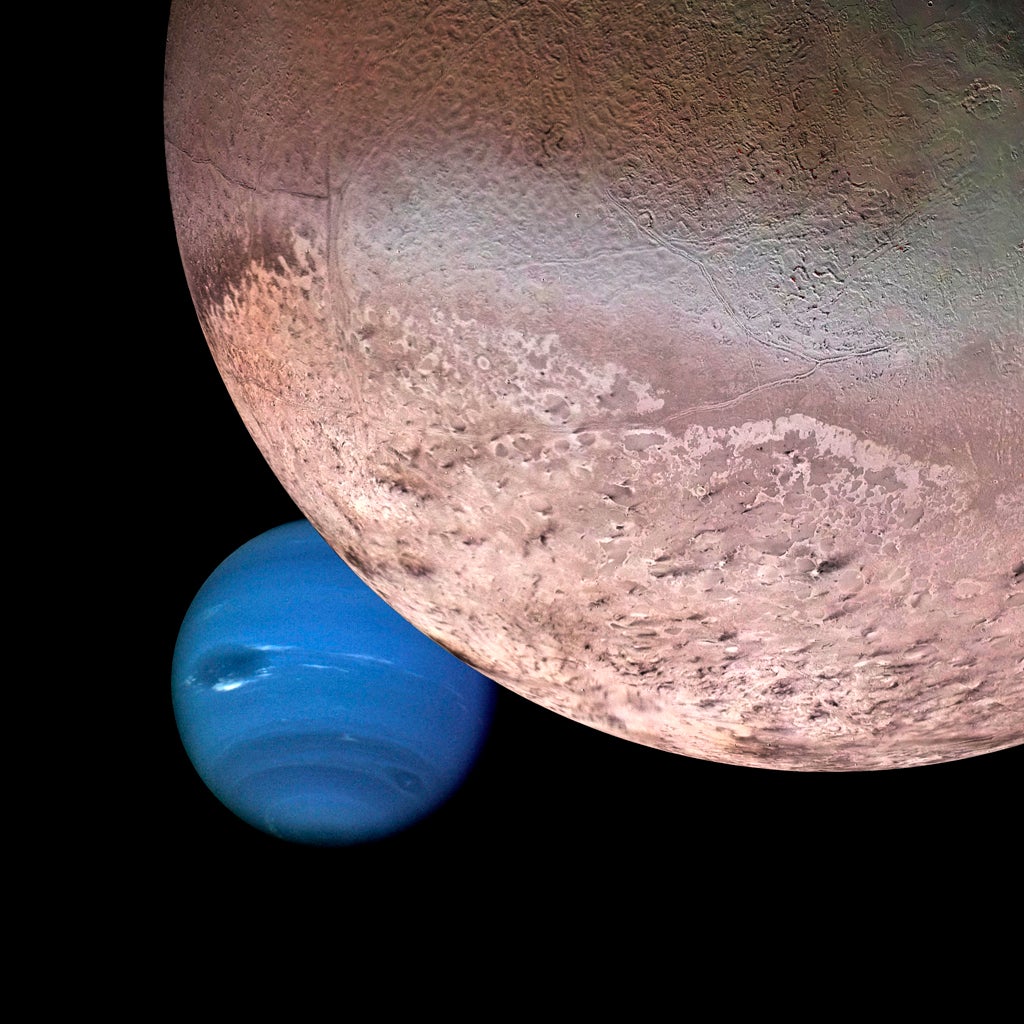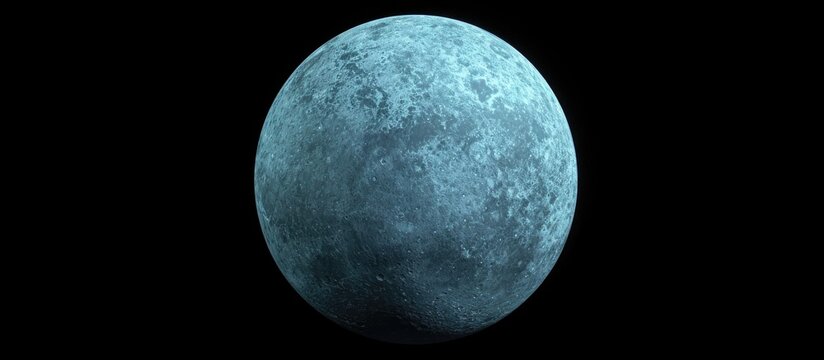Nereid: A Faint, Distant Mystery in Neptune’s Shadow
Nereid, Neptune’s enigmatic moon, orbits with an extreme, unpredictable path, making it one of the most mysterious celestial bodies in our solar system. Dive into its strange journey, puzzling origins, and the secrets it holds beyond the icy depths of Neptune.

Discovery
Nereid, one of Neptune’s most intriguing moons, was discovered in 1949 by astronomer Gerard Kuiper. It was the second moon found orbiting Neptune, after Triton. The moon is named after the Nereids, sea nymphs from Greek mythology, which is fitting given Neptune’s connection to the Roman god of the sea.
Unusual Orbit
Nereid has one of the most eccentric orbits of any moon in the solar system. Its distance from Neptune varies dramatically, ranging from about 1.4 million kilometers to nearly 9.7 million kilometers. This highly elliptical orbit suggests that Nereid may have been a captured object or was thrown into its current path by past gravitational interactions, possibly involving Neptune’s largest moon, Triton.
Size and Shape
Nereid is relatively small, with a diameter of about 340 kilometers, making it much smaller than Neptune’s dominant moon, Triton. Its shape is likely irregular rather than spherical, similar to other small moons and asteroids. The uneven form suggests that Nereid lacks the gravity necessary to pull itself into a perfect sphere.
Surface and Color
Nereid’s surface appears to be composed of a mix of ice and rock, much like other distant moons in the outer solar system. Observations suggest that its color is mostly gray with some slight variations in brightness, indicating a surface that has been impacted by micrometeorites over billions of years. Its brightness changes over time, which could mean that it has a tumbling rotation or an uneven surface reflecting sunlight differently.
Mysterious Rotation
Scientists have struggled to determine Nereid’s exact rotation period. Unlike other moons with well-defined spin rates, Nereid’s light fluctuates unpredictably. Some theories suggest that it could be tumbling chaotically as it moves along its extreme orbit, potentially due to past interactions with Neptune or other celestial bodies.
Possibility of a Captured Object
Given its unusual orbit, many astronomers believe Nereid was once a wandering object, possibly an asteroid or a Kuiper Belt object, that was pulled in by Neptune’s gravity. If true, this would make Nereid one of the few known captured moons in the solar system, much like Neptune’s largest moon, Triton, which is also thought to have been an interloper.
Lack of Geological Activity
Unlike Triton, which has active geysers and a relatively young surface, Nereid appears to be geologically inactive. Its ancient, cratered surface suggests it has remained largely unchanged for billions of years. This means Nereid lacks any significant internal heat that could drive volcanic or tectonic activity.
Exploration and Observations
Nereid has been observed primarily through telescopes and space probes. The best images of the moon come from NASA’s Voyager 2 spacecraft, which passed through the Neptune system in 1989. However, due to Nereid’s great distance and small size, Voyager 2 could not capture detailed images. Most of what we know about Nereid comes from ground-based telescopic observations.
Comparison to Other Moons
Compared to other moons in the solar system, Nereid stands out due to its extreme orbit and unpredictable brightness variations. While it lacks the grandeur of larger moons like Titan or Ganymede, its unique characteristics make it an important subject for studying how moons form and evolve around giant planets.
Future Exploration
No current space missions are planned to revisit Nereid, but future probes exploring Neptune’s system could provide more detailed information about this mysterious moon. Understanding Nereid better could offer insights into Neptune’s past and the history of the outer solar system.
Conclusion
Nereid remains one of Neptune’s most mysterious moons, with its extreme orbit, uncertain rotation, and possible origins as a captured object. Its surface is ancient and heavily cratered, revealing a long history of impacts. While it may not have active geysers or an atmosphere like some other moons, its unique characteristics make it a fascinating target for future study. If a mission to Neptune ever happens, Nereid could provide crucial clues about how icy moons and distant planetary systems evolve.
What's Your Reaction?







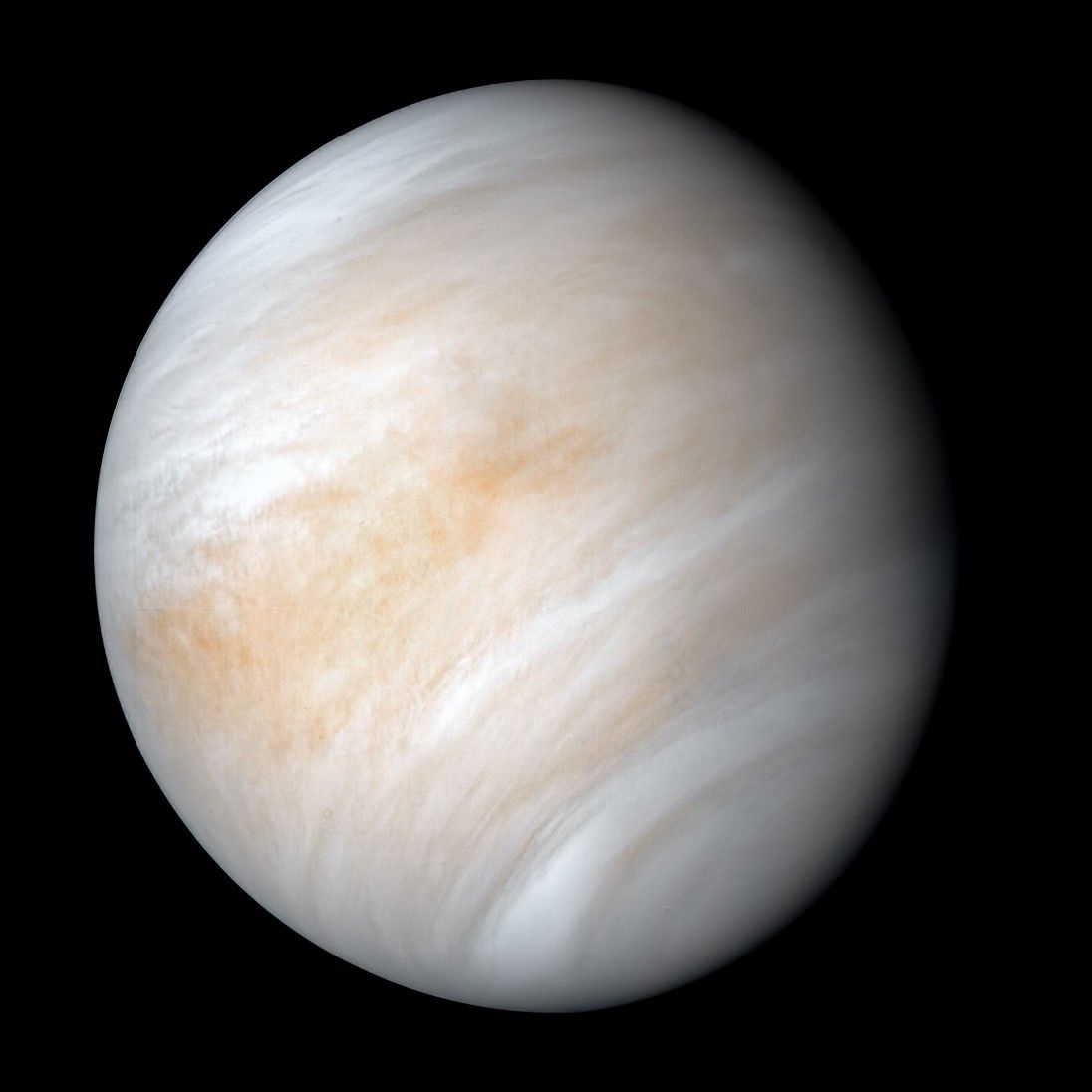



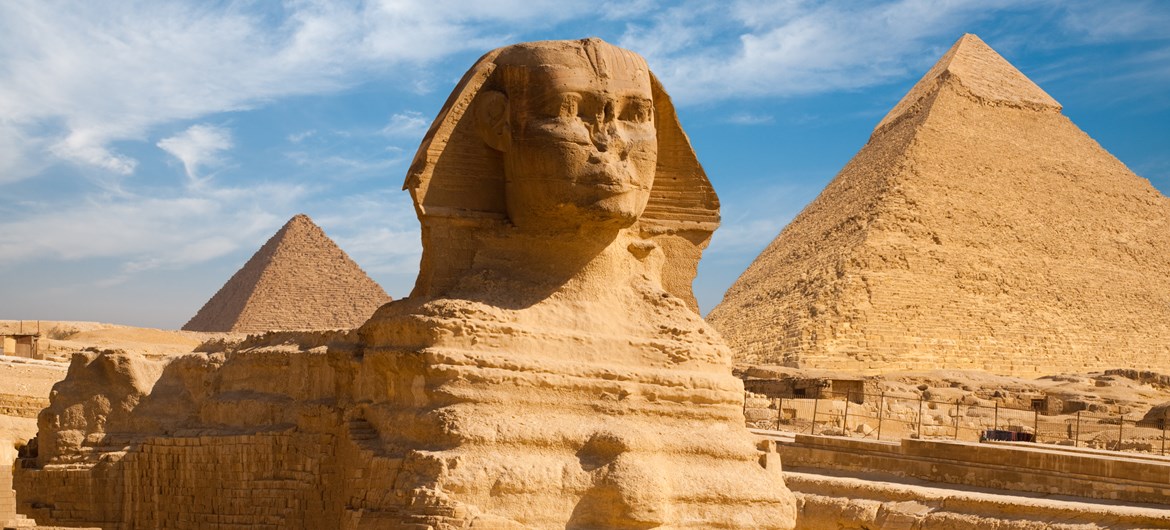
/https://tf-cmsv2-smithsonianmag-media.s3.amazonaws.com/filer_public/54/66/546650fa-26a4-40fd-8d6d-5a7a04540f81/rosetta2.png)
:max_bytes(150000):strip_icc():focal(999x0:1001x2)/robert-prevost-050825-1-39395418ab494da5a3a700c9478e66c8.jpg)


























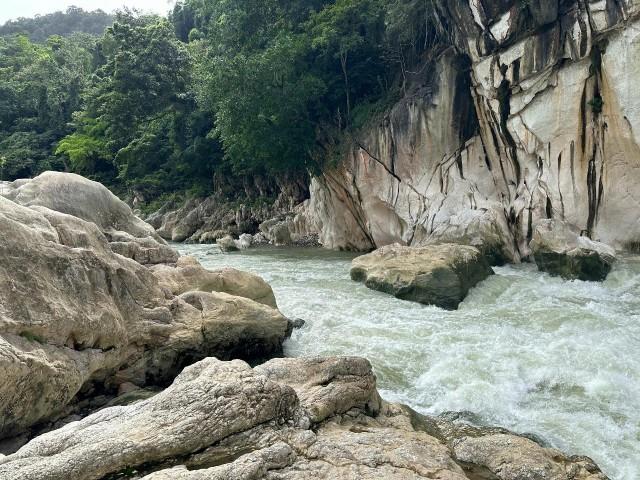




















format(webp))
format(webp))















